Athlete’s Foot is a fungal infection that can be pesky, embarrassing, and uncomfortable. Luckily, this is a common condition that can be cured at home. Many of us turn to over-the-counter remedies from the pharmacy to treat Athlete’s Foot, but for those of us seeking a more natural and holistic treatment option, we can turn to – you guessed it – essential oils!
We’ll go over the background of anti-fungal essential oils, how they work, and share some of the science behind the anti-fungal properties of these oils. Then, we’ll share some of the best essential oils for toenail fungus and Athlete’s Foot as well as some home remedies that feature essential oils as the active ingredients. Of course, we’ll include precautions to look out for as you leverage these essential oils.
Table of Contents
Anti-Fungal Essential Oil Research
Our amazing essential oils can have a myriad of benefits, one of which is the most relevant for Athlete’s Foot is the ability to fight fungus. There is a lot of scientific evidence supporting several essential oils as fungi-fighters, which also makes them your best bet for combatting Athlete’s Foot.
One 1996 study, found that aegle, citronella, geranium, lemongrass, orange, palmarosa, and patchouli inhibited the growth of twelve different strains of fungi tested in the lab. Eucalyptus and peppermint inhibited the growth of eleven of the twelve strains of fungi that were tested. These results are echoed across several scientific studies.
How Do They Work?
If we get into the nitty-gritty of how essential oils function as anti-fungal agents, it is really quite remarkable. Essential oils contain terpenes and terpenoids, which are basically the effective molecules of the oil. Terpenes are the “active ingredient” of essential oils, powerful molecules that interact with other cells in specific ways.
The terpenes of anti-fungal essential oils have been found to disrupt the cell membrane of fungi, meaning that they can cause inhibited growth of these fungus cells or even cell death. The direct action of anti-fungal essential oils on fungus is especially important.
The way that over-the-counter drugs interact with the cell walls of fungi inhibits their growth, but can also cause mutation and therefore drug-resistant strains of fungi. Essential oils target a part of the fungus cell that prevents mutation and resistant strains from developing.
Best Essential Oils for Athlete’s Foot Treatment
There are several essential oils that are proven to be effective against fungus reduction, but the Athlete’s Foot (or tinea pedis) fungus is a tricky fungus that responds best to a few specific essential oils. We’ll cover tea tree essential oil and coconut oil primarily while sharing a few other essential oils that have proven to be effective against tinea pedis and other fungi on the feet!
Tea Tree Oil for Toenail Fungus
Tea tree essential oil is a veritable powerhouse essential oil, offering a wide range of potent benefits! Not only does tea tree oil have anti-fungal properties, but it is also considered to be antibacterial, antiviral, and anti-inflammatory.

Tea tree essential oil has proven effective at relieving symptoms of contact dermatitis, or a basic rash, but there is also research supporting tea tree’s role as a treatment for Athlete’s Foot.
Precautions
It is important to note that many people can develop a rash from the use of tea tree essential oil, even if it is diluted (as it should be) with a carrier oil.
We recommend starting treatment with a very small patch of skin and seeing how you react. Each person is different, so you don’t want to potentially create more irritation by jumping the gun and slathering tea tree on your entire foot before knowing how you react!
During your patch test, don’t forget to use your carrier oil!
For the treatment of fungus, we recommend coconut oil because of its additional antibacterial properties that give nasty bacteria and fungi an extra kick in the rear!
Coconut oil for Toenail Fungus
We hear a lot of things about coconut oil, so let’s clear it up and share how you can use this oil on your feet! Coconut oil has been researched with positive results as an antifungal agent so feel free to use this on your toes to cut down on toenail fungus.
Unlike tea tree oil, coconut oil does not typically irritate the skin so it can be used more confidently on the skin. However, you should always do a patch test on your skin first so that you are completely certain that you will not have adverse effects.

Coconut oil is also awesome for both Athlete’s Foot and toenail fungus because, in addition to being anti-fungal, it also has antimicrobial benefits.
What makes coconut oil so powerful at fighting microorganisms in the presence of lauric acid. Lauric acid is a medium-chain fatty acid that has been shown to kill off bacteria in research studies. More than 50% of the composition of coconut oil is lauric acid, so this is part of what makes it such a great option for killing bacteria.
Capric acid is another fatty acid that is present in coconut oil. There is research that directly links capric acid with killing certain types of fungi, meaning that it is another component of coconut oil that makes it a great option for treating fungus on the feet and toenails.
Lemon Essential Oil
Lemon essential oil is a great option for combatting microorganisms that cause conditions like Athlete’s Foot.
Scientific research has shown that lemon oil may be effective as both an antibacterial agent and antioxidant, which is why we see a lot of lemon essential oil in natural household cleaning products.
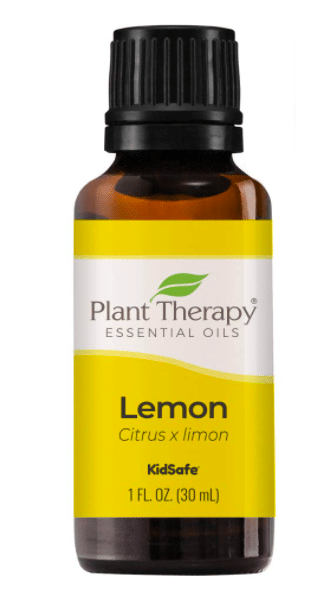
The high acidity and astringent properties of lemon essential oil are also thought to be effective against Athlete’s Foot as well as the bacteria you might find lurking on your kitchen counters.
Whether you choose to use lemon essential oil for Athlete’s Foot or not, it should definitely be a staple in your essential oil toolkit.
Lavender Essential Oil
This essential oil may come as a surprise on the list of oils to use to combat tinea pedis.
Lavender’s function with treating tinea pedis is more so to assist with the discomfort associated with it. Lavender is an essential oil that is gentle and soothing and has shown promise in relieving uncomfortable skin irritation.
If you are experiencing tinea pedis and have uncomfortable itching or burning sensations, a few drops of lavender oil mixed with your carrier oil of choice may be your key to relief.

However, if the itching and burning sensations on your feet worsen or don’t improve within a few days, be sure to seek medical attention.
In addition to its benefits in soothing the skin, lavender oil is proven to reduce stress and anxiety, providing you with some much-needed relaxation after dealing with your feet!
Eucalyptus Essential Oil
The potential medicinal benefits of eucalyptus are thought to come from the chemical compound called eucalyptol, which is shown to have antimicrobial properties.
Eucalyptus oil is a great addition to any at-home remedy for Athlete’s Foot, adding not only the potential of antimicrobial benefits but also a fresh scent.
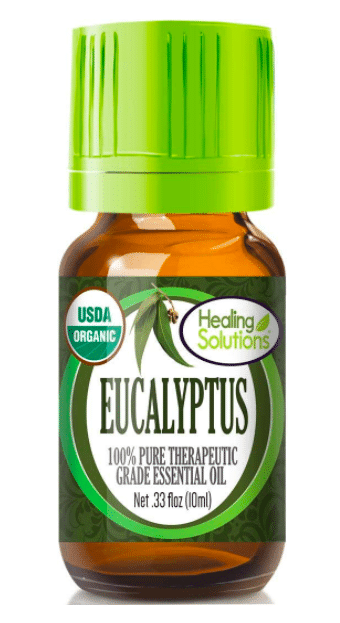
Outside of its use as a potential treatment for Athlete’s Foot, eucalyptus has been shown to reduce inflammation in the upper respiratory tract and sinuses, making it a great option for diffusing if you are dealing with a cold or allergies.
Eucalyptus is just one of multiple oils that are great for inflammation and pain.
Peppermint Essential Oil
Ah, peppermint. The scent can be reminiscent of the holiday season, but this wonderful oil has efficacy year around!
The most relevant application of peppermint oil for tinea pedis is its potential to relieve uncomfortable itching associated with the condition.
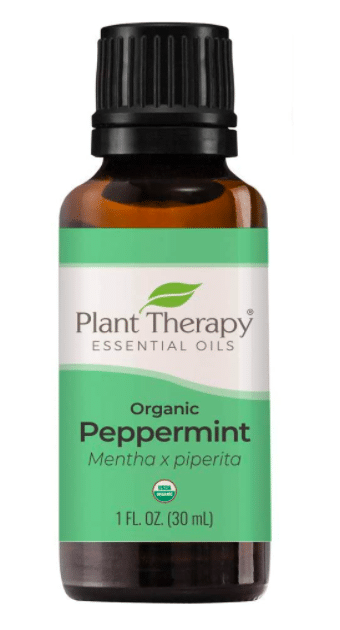
In fact, one particular study showed peppermint’s itch-relief potential, test subjects showed significantly less itching than their counterparts in the placebo group.
Precautions
Some sources say that peppermint essential oil can be applied directly to the affected area, but we still maintain that it is best to dilute essential oils with a carrier oil until you know how you react to it. Give peppermint a try to relieve frustrating itching through topical application.
Oregano Essential Oil
Oregano has been in documented medicinal use since the era of the Roman Empire! This powerful essential oil has chemical compounds called phenols, terpenes, and terpenoids, which have very strong antioxidant properties and are responsible for its fragrance.
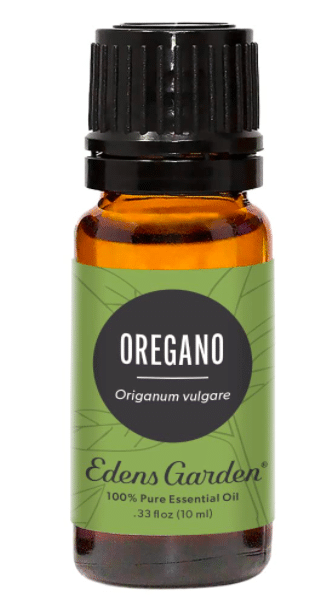
Some of the most important compounds that occur in oregano are carvacrol, thymol, and rosmarinic acid. Carvacrol is the most commonly occurring phenol in oregano oil and has proven to stop the growth of different bacterias, which can be especially important to treating tinea pedis since it can occur in conjunction with other conditions.
Thymol is a natural anti-fungal that can help combat Athlete’s Foot and has also shown promise against candida overgrowth.
Rosmarinic Acid is an antioxidant found in oregano that can fight free radicals and the damage caused by them.
Natural Remedies for Athlete’s Foot
You don’t need to head to the pharmacy for relief from Athlete’s Foot. Instead, open your medicine cabinet and your essential oil kit and you can craft some effective and sweet-smelling remedies right in the comfort of your own home. We’ve crafted a few remedies for you below to try out if you ever find yourself dealing with Athlete’s Foot.
Keep in mind that most people see relief in 2-6 weeks of consistent treatment, so you will need to make sure you are treating the condition regularly to see true results!
Athlete’s Foot Cream
Take about five tablespoons of coconut oil in a glass container as your base for this cream, then add in two drops of tea tree oil and three drops of another oil of your choice.
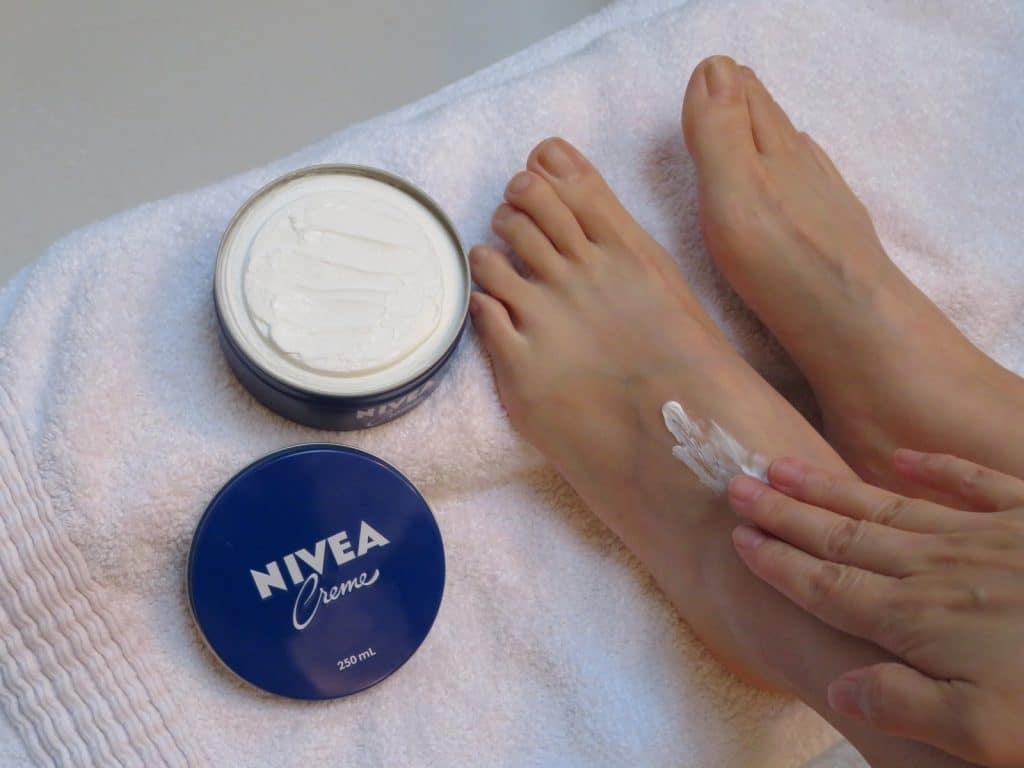
If you choose to add arrowroot powder to the mix, add in a tablespoon or two and mix.
From here, you can mix your cream with a clean spoon and apply it to your feet three to four times daily. Your best bet is to purchase a therapeutic-grade essential oil to ensure that you receive the best results possible from your cream.
Athlete’s Foot Spray
If putting coconut oil on your feet doesn’t sound like a good option to you, fear not! We have this refreshing Athlete’s Foot Spray recipe for you!
You’ll need to gather a clean spray bottle, witch hazel, apple cider vinegar, tea tree essential oil, and cinnamon essential oil. You can choose to forgo the cinnamon essential oil if you don’t have it, but it does have some great anti-inflammatory benefits.
Once you have all of your ingredients, you can mix about a quarter cup of witch hazel and a quarter cup of apple cider vinegar along with one or two drops of tea tree essential oil (remember to start slow with tea tree), and then you have the option of adding around ten drops of cinnamon essential oil to your mixture.
Precautions
Give the spray bottle a gentle shake to ensure that all of the ingredients are mixed before spraying on the affected areas. As always, be sure to patch test this spray to make sure you don’t have an adverse reaction.
Athlete’s Foot Soak
There are several essential oil options out there for an effective Athlete’s Foot soak.

You can try out a foot bath with one drop of tea tree and a few drops of peppermint and lemon essential oils to fight some fungus. Not only does this combination pack the punch of tea tree, peppermint, and lemon, it also smells fantastic! Fantastic and fungus-fighting, what else could you ask for?
Prevention Methods
There are also a few practical tips to consider to prevent Athlete’s Foot. Practicing good hygiene and protecting your feet from cracks or flaking is important for preventing any kind of infection, especially the transmission of tinea pedis.
Keep Your Feet Dry
Keeping your feet dry is an additional way to reduce the discomfort of Athlete’s Foot because the fungus that causes Athlete’s Foot thrives in a moist environment.
Make sure that any cuts on your feet are clean and covered at all times. On that note, also make sure that you are not sharing razors, towels, socks, or shoes with anyone. Sharing is caring, but sharing fungus does not fall under that category.
Wear Shoes in Public Places
When showering in public places like the gym or walking around a public bathroom or sauna, be sure to wear shower shoes. You may feel goofy, but you’ll be reducing the chance of infections like Athlete’s Foot or worse.
Concluding Thoughts
As always, use your best judgment when treating foot fungus with essential oils. If you find that the appearance is changing in any way or beginning to spread, always seek immediate medical attention.
Additionally, when using new essential oils or combinations of oils, be sure to always patch test a small portion of your skin before going all in to see how your skin reacts. Always use your best judgment, enjoy the fungus-fighting scent combinations you create, and be well!

